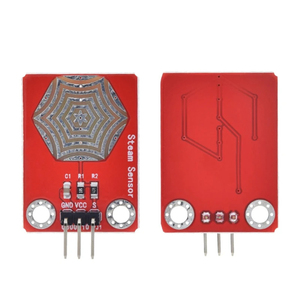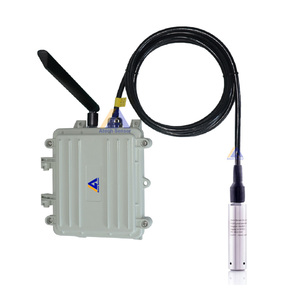(859 products available)










































































































































































































Raspberry Pi water level sensor includes the following types. They are as follow:
Capacitive level sensors work by detecting changes in capacitance caused by the presence or absence of water. They consist of coated conductive probes mounted in a non-conductive pipe. They are inserted into the water tank. These sensors are suitable for non-metallic tank as well as water which is not conductive. They are also known for their accuracy and can be used for both liquid and solid level detection.
A pressure transducer level sensor measures water level as it measures the pressure exerted by the water at the surface of a tank. This pressure is proportional to the water column height. The transducer converts this pressure into an electrical signal. This gives the user an output voltage that corresponds to the water level. These sensors are ideal for large tanks and offer high accuracy and long-term stability.
Ultrasonic level sensors work by sending a high-frequency sound wave toward the water surface. After sending the sound waves, the time it takes for the waves to echo back is measured. These sensors are non-contact and are suitable for all kinds of water tanks. They are among the preferred choice for large open tanks and provide a user with a high degree of accuracy.
A float level sensor works by utilizing a floating object that moves up and down with the water level. A movement of the floating ball will activate a switch. This will provide a simple way to measure high and low-water levels. There are also continuous measurement types. These types use a float connected to a rod or wire to give the continuous water level.
Water level sensors include the following industrial applications. They are as follow:
In agriculture, water level sensing is crucial for irrigation management. Water level controllers help provide accurate data on soil moisture and water levels in irrigation systems. This helps farmers use water in moderation. They avoid over or under-watering plants. With a Raspberry Pi water level indicator, they can monitor water levels in reservoirs and automate irrigation systems. This makes agriculture sustainably done, especially with automation.
Water level sensors are widely used to prevent contamination in industrial wastewater. By monitoring water levels and automatically detecting excess water or changes in chemical composition. These changes can be detected by sensors and alerts will be sent through the Raspberry Pi water level detector. This allows timely action to be taken and helps avoid environmental damage, and legal issues, and ensure compliance with environmental regulations.
Water treatment plants utilize water level sensors to regulate and manage the treatment process. These sensors in the plant monitor water levels in tanks and then control pumps and valves. This leads to an efficient treatment process and prevent overflow or dry run of equipment. The treated water levels can also be monitored for distribution. This makes the sensors vital for the facility's automation and safety.
Leak detection is very important in industries with high water usage. Water level sensors can detect even a small change in water level which can indicate a leak. When combined with Raspberry Pi boards, they provide real-time data and alerts reduce wastage and prevent damage to the facility and its equipment. This benefit makes them crucial for industries such as manufacturing and pharmaceuticals to monitor.
Water reservoirs supply water to industries and surround communities and businesses. Water level sensors monitor the reservoir level. They will also provide data that will be used for resource management and distribution. This will prevent shortage or excess and keep the supply reliable. When coupled with a Raspberry Pi temperature sensor, they improve efficiency and help automate processes.
Water level sensors have the following specifications and features. They are as follows:
These water level sensors are equipped with an ultrasonic transducer. It enables the sensors to accurately measure the distance to the water surface. They can support a wide range of tank depths. Users can choose the sensor that best suits their tank depth as they come in various tank depth configurations.
These sensors are equipped with Raspberry Pi water level sensor modules that interface easily with Raspberry Pi. They use GPIO pins for data transmission. Their waterproof casing ensures durability and strength even in harsh environments. The ultrasonic level sensor is also energy efficient. They operate on low power and can constantly monitor for hours without draining the attached Pi.
For installation, the sensor must be mounted at the top of the tank. This allows it to measure the water level without being submerged. The mounting angle should be less than 90° from the vertical plane. This ensures accurate measurement.
The Raspberry Pi should be configured with the necessary software to read data from the sensor. This allows for easy access to the data online. The Raspberry Pi must be connected to a Wi-Fi network to access the collected data remotely. The data can be logged to a cloud service. This enables real-time monitoring without the need for physical presence.
Complete the installation by mounting the sensor on a tank and connect the Raspberry Pi to the sensor. After connection, launch the monitoring application where the user can visualize the data. Users have to ensure the sensing area is free of any obstructions. Any obstruction can affect the sensor's accuracy by blocking the ultrasonic waves.
Regularly check if the sensor is functioning properly. This can be done by cross-verifying the readings with the actual water level. The code running on the Raspberry Pi can be modified to change the monitoring interval or add alert functionalities. This will enhance performance based on user needs.
Some considerations to have when choosing Raspberry Pi water sensors for water quality measurement are:
Accuracy is very key in getting water level sensors. Pi researchers prefer sensors with optimal accuracy to get accurate data. The accuracy usually depends on the type of sensor. Ultrasonic and capacitive sensors are known to be very accurate. They account for variables like tank shape and environmental factors. These variables can affect the accuracy of the sensor.
These environmental factors are very crucial because of the considerable influence they may have on the sensor. Humidity, temperature, and debris will affect the working of Raspberry Pi water level sensors. That is why it is important to choose a sensor with good waterproofing and temperature compensation. Good waterproofing will ensure the sensor is not affected by debris or water immersion.
Response time is the time the sensor takes to register a change in water level. It is key for applications that require constant monitoring or have rapidly fluctuating water levels. High response time means there will be a delay in getting crucial data. This is detrimental to users in industries such as wastewater treatment. Fast-responding sensors like pressure transducers and float switches are ideal for such applications.
Some water level sensors require a lot of maintenance to keep them operational and working fine. There are, however, options that require little to no maintenance at all. They are the one users should opt for. Infrared and ultrasonic sensors are less prone to fouling compared to their counterparts. They also offer a reduction in maintenance cost and time.
Water type is an important consideration as the sensor works with all kinds of water. Not all water types have the same kind of water level sensor compatible with them. That is why it is important to determine the kind of water the sensor will work with. Raspberry Pi water level indicators come with corrosion-resistant materials. They are ideal for both potable and non-potable water.
A1: To ensure the accuracy of RasPi Water Level Sensors, it is important to choose the right type of sensor. Sensors like pressure transducers and capacitive have been proven to provide accurate readings.
It is also vital to perform regular calibration to cross-check the sensor's reading against the actual water level.
Other factors to consider are environmental impact, tank material, and installation position. Keeping these factors in check will ensure optimal accuracy.
A2: Water level sensors do not consume a lot of power while operating, especially with low-power ultrasonic sensors. With the aid of Raspberry Pi, users can integrate a battery power source to minimize the chances of power wastage.
Moreover, using sleep mode on Raspberry Pi when the device is not in use will largely save power.
A3: Exposure to high temperature can damage the internal components of the water level sensor. It can also lead to inaccurate readings and reduced lifespan.
Temperature will not affect capacitive and pressure-based sensors as much as it does ultrasonic sensors. These two are ambient-sensitive and will constantly change their reading with change in temperature.
A4: The water level sensor used in conjunction with Raspberry Pi is ideal for outdoor conditions. They come with proper waterproofing and corrosion-resistant materials. This makes them ideal for outdoor conditions.
A5: There are several water level sensors that require a lot of maintenance to keep operational. Regular cleaning, calibration, and monitoring are required for these kinds of sensors.
Conversely, there are a few water level sensors that are less prone to fouling. They require less maintenance. These are infrared and ultrasonic water level sensors.